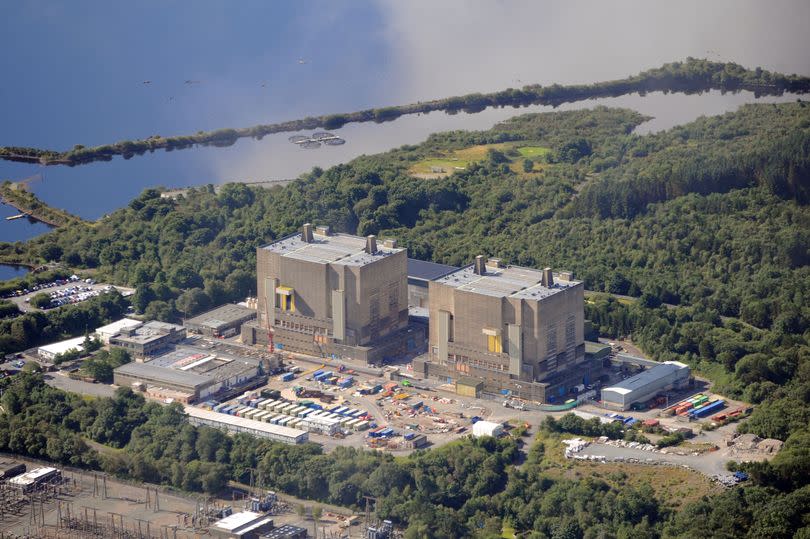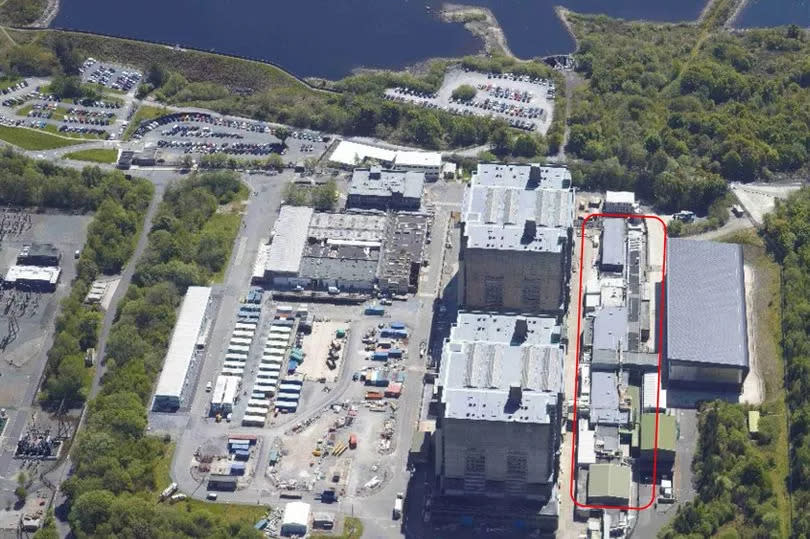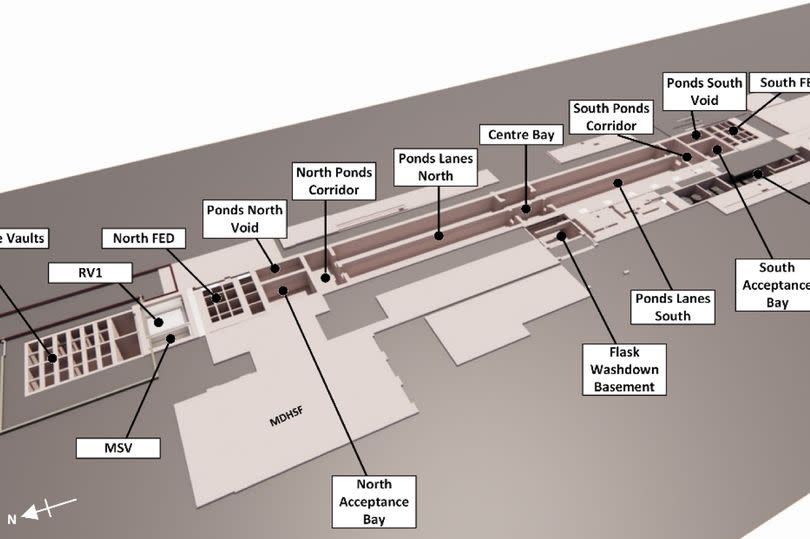Radiation levels assessed for on-site burial plan at old nuclear power station

Potential radiation levels arising from the next-stage decommissioning of a former nuclear power station have been assessed as within safety thresholds. Magnox, owner of the Trawsfynydd site in Gwynedd, is aiming to demolish and infill the site’s ponds complex before capping it with concrete.
In two scenarios – for future site occupiers and for some local wildlife – the UK’s Nuclear Restoration Services (NRS) said dosages could exceed safe levels. But the company said its own assessments were cautious and under criteria set by Natural Resources Wales (NRW) all safety thresholds were met.
Trawsfynydd stopped generating electricity in 1991 after operating for 26 years. Years of demolition and on-site disposal are planned. The reactor buildings are scheduled for completion by 2055 with final site clearance activities ending by 2070. The site will then be released from radioactive substances regulation “some time after that”.
READ MORE: Why UK Government nuclear quango ruled out Trawsfynydd from initial mini-nuke rollout
READ MORE: Sacked minister Hannah Blythyn was 'not the source' of leak says Welsh news site
First to be tackled will be the ponds complex – a set of buildings running alongside the site’s two reactor buildings. This is due for demolition in 2030 and this could take up to two years.
For this Magnox needs to amend its environmental permit and has applied to NRW for permission. A four-week public consultation was launched this week.
Martin Cox, NRW’s head of operations for northwest Wales, said: “We understand this permit variation is of particular interest to the public and local community. As the regulator for this application we are committed to keeping the community and environment healthy.
“We must be satisfied the proposed demolition, disposal, and capping is done in ways that are safe and meet our standards for the protection of people and the environment while allowing the site to be released from radioactive substances regulation in the future.” The NorthWalesLive WhatsApp community for top stories and breaking news is live now - here’s how to sign up.

The ponds complex contains concrete pools formerly used to cool and store used nuclear fuel before it was sent to Sellafield in Cumbria for reprocessing. This process ended in 1997 and 99.9% of all radioactive waste has been removed from the site.
Below the ponds and storage vaults are box-like structures capable of storing about 5,000 cubic metres of material, which is twice the volume of an Olympic-sized swimming pool. The plan is to fill these with “slightly radioactive” broken concrete from the demolished structures above them.
Magnox has submitted a “site-wide environmental safety case”, supported by more than 30 technical reports, to NRW. One includes radioactivity estimates by NRS for the ponds complex spanning four scenarios: natural evolution, human intrusion, site occupancy, and environmental impact.
Dosage levels for “inadvertent” human intrusion were found to meet safety thresholds “in all credible scenarios”. Screening criteria was also met for wildlife and plants in the surrounding area apart from the uppermost stretch of Afon Tafarn-helyg, a tributary of the Afon Dwyryd. Magnox noted its criteria was stricter that NRW’s under which the threshold would be met.

For site occupiers Magnox said a few features, just below ground, might breach its safety guidelines but not NRW’s. It added: “This exceedance is for a configuration that cautiously assumes a 0.15 m (minimum) cap thickness. Moreover such worst-case dose rates would be expected to drop below 0.017 mSv/year after around 100 years beyond the assumed end-state date (2083) and the probability of receiving such a dose is expected to be low.”
In any case radioactivity estimates are expected to decrease prior to demolition as further decommissioning continues. Additional borehole investigations are being conducted this year beneath the ponds complex to get a better understanding of groundwater flows. NRS added: “In short, the proposed disposals will be safe while they are being implemented, for the decades while the site remains under regulatory control, and then afterwards into the indefinite future.”
When considering Magnox’s bid for a permit variation to allow on-site disposal at Trawsfynydd NRW will be consulting with experts in Public Health Wales and the Office of Nuclear Regulation. The process is expected to be “lengthy”.
You can take part in the consultation, and view related documents, here. Get all the latest Gwynedd news by signing up to our newsletter sent every Tuesday.

 Yahoo News
Yahoo News 
